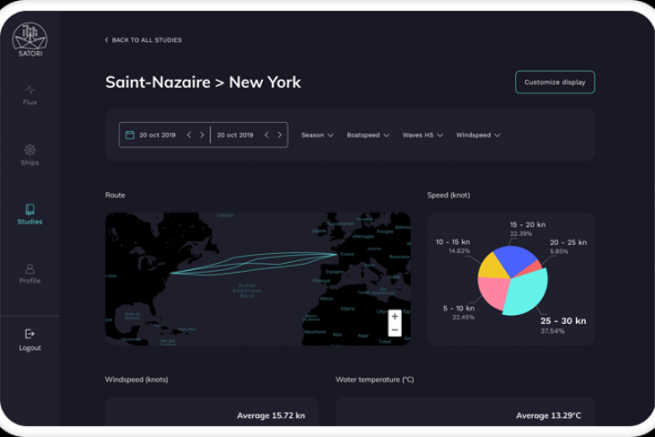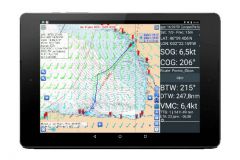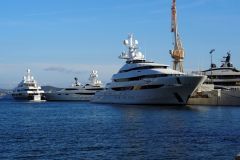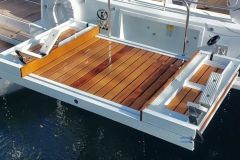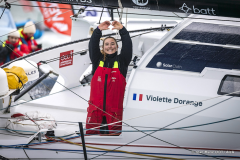A statistical vessel routing tool
D-ICE Engineering, founded in 2015 by Sofien Kerkeni, started in the field of dynamic ship positioning. Its development led it to work more widely in the modeling and empowerment of boats, collaborating in particular with Kara Technologies in the nautical sector, but also on meteorological routing studies. "We have been developing statistical routing algorithms for a few years now, particularly for projects involving hybrid sailing ships, such as Neoline or Canopée. We accompany the design of the cargo ship to validate the business model with information on travel time, engine power used, consumption, etc. The idea is to launch a lot of deterministic routing departures at different dates using weather data from Copernicus, a historical weather database. And then we get statistical routings from it. For each routing, we record ship data such as consumption, speed, engine power, environmental conditions encountered, etc." explains Maxime Dupuy, in charge of the Satori routing software developed by D-ICE.

Applications in offshore racing
The software has already won over a number of players in ocean racing. "We used Satori for the Banque Populaire team after the Route du Rhum for the design of the new trimaran (Editor's note: after the sinking of Banque Populaire IX). We did some routing with the old boat to look at the maximum conditions and to see if it was necessary to go in heavy conditions. We also worked with Maître Coq for the Vendée Globe and the Arctic Vendée. The routing for the round the world voyage was used to find out which sails were the most useful, as the IMOCA boats were entitled to one sail less for the Vendée Globe. It is also useful in terms of nutrition to find out about the conditions encountered and the sailor's energy balance, and to plan the right food," illustrated Maxime Dupuy.

Make statistical routing more accessible
Given the success of the statistical routing studies they proposed, D-ICE took advantage of the support of the European platform Copernicus Marine Service, to develop the online platform SATORI. "We realised that it was biting, but it was expensive in terms of manpower. With the online site, we are making statistical routing more accessible and we hope that it can be used further upstream in boat design," explains the engineer.
The customer enters the boat's data and fleece on the site. He chooses the route and the starting date(s) for the calculation (between 2000 and 2020). About half a day later, he obtains a report and a tool allowing him to easily visualize the results and filter them according to the different parameters of sea state, wind or engine power. The 1.5 euro fee for the calculation allows a large series of calculations for reliable statistical data to be launched at a lower cost. "For our pre-projects, we usually recommend one departure per week over 2 years, which makes about a hundred calculations" says Maxime Dupuy.
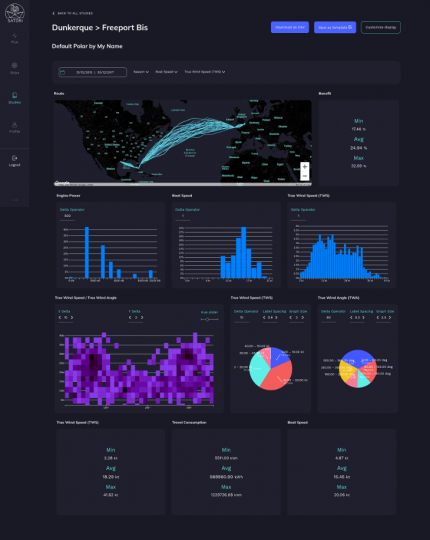
Satori opens D-ICE to other maritime projects
Satori will continue its developments. The online offer is not yet adapted to pure sailing yachts but should be available from January 2021. "We have to adapt the ocean mesh, which is different for a pure sailing boat," explains the manager. Thought is currently being given to integrating new objectives and constraints into the platform, such as an index of the degree of confidence in weather models.
In addition to paving the way for other online calculation software proposal projects, experience has already been gained in small ways. On board the Vendée Globe, Maître Coq is using onboard software with a database of statistical routing data produced by Satori, connected to the boat's control centre, which enables the skipper Yannick Bestaven to display and compare his routing based on the day's weather data with the historical statistical routings with the closest weather conditions. "This can be an interesting complement to classic routing software and traditional skipper's roadbooks" concludes the D-ICE engineer.

